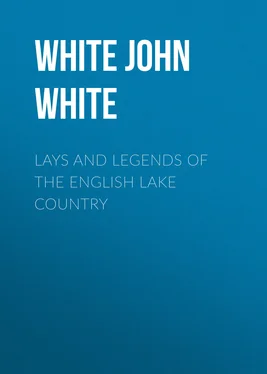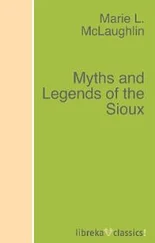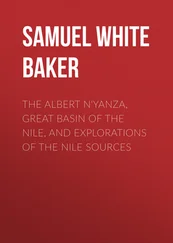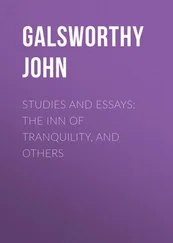White John White - Lays and Legends of the English Lake Country
Здесь есть возможность читать онлайн «White John White - Lays and Legends of the English Lake Country» — ознакомительный отрывок электронной книги совершенно бесплатно, а после прочтения отрывка купить полную версию. В некоторых случаях можно слушать аудио, скачать через торрент в формате fb2 и присутствует краткое содержание. Жанр: foreign_poetry, Поэзия, foreign_antique, foreign_prose, на английском языке. Описание произведения, (предисловие) а так же отзывы посетителей доступны на портале библиотеки ЛибКат.
- Название:Lays and Legends of the English Lake Country
- Автор:
- Жанр:
- Год:неизвестен
- ISBN:нет данных
- Рейтинг книги:4 / 5. Голосов: 1
-
Избранное:Добавить в избранное
- Отзывы:
-
Ваша оценка:
- 80
- 1
- 2
- 3
- 4
- 5
Lays and Legends of the English Lake Country: краткое содержание, описание и аннотация
Предлагаем к чтению аннотацию, описание, краткое содержание или предисловие (зависит от того, что написал сам автор книги «Lays and Legends of the English Lake Country»). Если вы не нашли необходимую информацию о книге — напишите в комментариях, мы постараемся отыскать её.
Lays and Legends of the English Lake Country — читать онлайн ознакомительный отрывок
Ниже представлен текст книги, разбитый по страницам. Система сохранения места последней прочитанной страницы, позволяет с удобством читать онлайн бесплатно книгу «Lays and Legends of the English Lake Country», без необходимости каждый раз заново искать на чём Вы остановились. Поставьте закладку, и сможете в любой момент перейти на страницу, на которой закончили чтение.
Интервал:
Закладка:
The morn awoke. As the breezy smile
Of dawn played over St. Mary's Isle,
The tinkling sound of the mass-bell rose,
And startled the valleys from brief repose.
Then, like a speck from afar descried,
The monk row'd out on the waters wide—
From the Nab row'd out, with the fiend in his wake,
To lay him in quiet, across the lake.
And fear-struck men, and women that bore
Their babes, beheld from height and shore,
How he reached the wood that hid the dell,
Where he laid the Crier with book and bell.
"For the ivy green" the spell was told;
"For the ivy green" his knell was knoll'd;
That as long as by wall and greenwood tree
The ivy flourished, his rest might be.
So did the good monk; and thus was laid
The Crier in ground by greenwood shade.
In the quarry of Claife the wretched ghost
To human ear for ever was lost.
And country folk in peace again
Went forth by night through field and lane,
Nor dreaded to hear that terrible note
Cry over the water, and hail the boat.
And still on that cliff, high over the Mere,
When summer is merry, and skies are clear,
In holiday times hearts light and gay
Look over the hills and far away.
But what that night of horror revealed,
And what that night and morrow concealed,
Of spirits so wicked and given to roam,
Lies hid with the monk in St. Mary's Holm.
Peace be with him, peaceful soul!
Long his bell has ceased to toll.
Green the Isle that folds his breast;
Clear the Lake that lull'd his rest.
Though the many ages gone
Long have left his place unknown;
Yet where once he kneel'd and pray'd,
By his altar long decay'd,
Stranger to this Island led!
Humbly speak and softly tread;
Catching from the ages dim
This, the burden of his hymn:—
"Ave, Thou before whose name
Wrath and shadows swiftly flee!
Arm Thy faithful bands with flame,
Earth from foulest foes to free.
"Peace on all these valleys round,
Breathe from out this Islet's breast;
Wafting from this holy ground
Seeds of Thy eternal rest.
"Wrath and Evil, then no more
Here molesting, all shall cease.
Peace around! From shore to shore—
Peace! On all Thy waters—peace!"
NOTES TO "CRIER OF CLAIFE."
The little rocky tree-decked islet in Windermere, called St. Mary's, or the Ladye's Holme, hitherto reputed to have formed part of the conventual domains of the Abbey at Furness, had its name from a chantry dedicated to the Virgin Mary, which was standing up to the reign of King Henry the Eighth, but of which no traces are now remaining. "When," says an anonymous writer, "at the Reformation, that day of desolation came, which saw the attendant priests driven forth, and silenced for ever the sweet chant of orison and litany within its walls; the isle and revenues of the institution were sold to the Philipsons of Calgarth. By them the building was suffered to fall into so utter a state of ruin, that no trace even of its foundations is left to proclaim to the stranger who meditates upon the fleeting change of time and creed, that here, for more than three centuries, stood a hallowed fane, from whence at eventide and prime prayers were wafted through the dewy air, where now are only heard the festal sounds of life's more jocund hours." Lately renewed antiquarian investigation has, however, disclosed the erroneousness of the generally received statement respecting the early ownership of this tiny spot; as in Dodsworth's celebrated collection of ancient evidences there is contained an Inquisition, or the copy of one, taken at Kendal, so far back as the Monday after the feast of the Annunciation, in the 28th Edward the Third, which shews that this retreat, amid the waters of our English Como, appertained not to Furness Abbey, but to the house of Segden, in Scotland, which was bound always to provide two resident chaplains for the service of our Ladye's Chapel in this island solitude. For the maintenance and support of those priests, certain lands were given by the founder, who was either one of that chivalrous race, descended from the Scottish Lyndseys "light and gay," whose immediate ancestor in the early part of the thirteenth century had married Alice, second daughter and co-heiress of William de Lancaster, eighth Lord of Kendal; and with her obtained that moiety of the Barony of Kendal, whose numerous manors are collectively known as the Richmond Fee; or the chantry may have owed its foundation to the pious impulses of Ingelram de Guignes, Sire de Courci, one of the grand old Peers of France, whose house, so renowned in history and romance, proclaimed its independence and its pride in this haughty motto:—
"Je ne suis Roy ni Prince aussi,
Je suis Le Seignhor de Courci."
And which Ingelram in 1285 married Christiana, heiress of the last de Lyndsey, and in her right, besides figuring on innumerable occasions as a feudal potentate, both in England and Scotland, he became Lord of the Fee, within which lies St. Mary's Isle.
On an Inquisition taken after the death of Johanna de Coupland, in the 49th Edward the Third, it was found that she held the advowson of the Chapel of Saint Mary's Holme, within the lake of Wynandermere, but that it was worth nothing, because the land which the said Chapel enjoyed of old time had been seized into the hands of the King, and lay within the park of Calgarth. It is on record, however, that in 1492, an annual sum of six pounds was paid out of the revenues of the Richmond Fee, towards the support of the Chaplains; and in the returns made by the ecclesiastical Commissioners in Edward the Sixth's reign, "the free Chapel of Holme and Wynandermere" is mentioned, shortly after which it was granted, as aforesaid, to the owners of Calgarth.
The singular name of the "Crier of Claife" is now applied to an extensive slate or flag quarry, long disused, and overgrown with wood, on the wildest and most lonely part of the height called Latter-barrow, which divides the vales of Esthwaite and Windermere, above the Ferry. In this desolate spot, by the sanctity and skill of holy men, had been exorcised and laid the apparition who had come to be known throughout the country by that title; and the place itself has ever since borne the same name. None of the country people will go near it after night fall, and few care to approach it even in daylight. Desperate men driven from their homes by domestic discord, have been seen going in its direction, and never known to return. It is said the Crier is allowed to emerge occasionally from his lonely prison, and is still heard on very stormy nights sending his wild entreaty for a boat, howling across Windermere. Mr. Craig Gibson, in one of his graphic sketches of the Lake country, says that he is qualified to speak to this, for he himself has heard him. "At least," says he, "I have heard what I was solemnly assured by an old lady at Cunsey must have been the Crier of Claife. Riding down the woods a little south of the Ferry, on a wild January evening, I was strongly impressed by a sound made by the wind as, after gathering behind the hill called Gummershow for short periods of comparative calm, it came rushing up and across the lake with a sound startlingly suggestive of the cry of a human being in extremity, wailing for succour. This sound lasted till the squall it always preceded struck the western shore, when it was lost in the louder rush of the wind through the leafless woods. I am induced to relate this," he continues, "by the belief I entertain that the phenomenon described thus briefly and imperfectly, may account for much of the legend, and that the origin of many similar traditional superstitions may be found in something equally simple."
Читать дальшеИнтервал:
Закладка:
Похожие книги на «Lays and Legends of the English Lake Country»
Представляем Вашему вниманию похожие книги на «Lays and Legends of the English Lake Country» списком для выбора. Мы отобрали схожую по названию и смыслу литературу в надежде предоставить читателям больше вариантов отыскать новые, интересные, ещё непрочитанные произведения.
Обсуждение, отзывы о книге «Lays and Legends of the English Lake Country» и просто собственные мнения читателей. Оставьте ваши комментарии, напишите, что Вы думаете о произведении, его смысле или главных героях. Укажите что конкретно понравилось, а что нет, и почему Вы так считаете.












